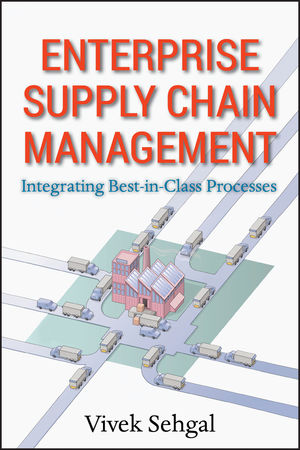Enterprise Supply Chain Management: Integrating Best in Class ProcessesISBN: 978-0-470-46545-5
Hardcover
224 pages
June 2009
 This is a Print-on-Demand title. It will be printed specifically to fill your order. Please allow an additional 10-15 days delivery time. The book is not returnable.
|
||||||
ENTERPRISE SUPPLYCHAIN MANAGEMENT Integrating Best-in-Class Processes
Is supply chain management all about forecasting? Or is it just a warehousing and transportation function? Demystifying the mystery supply chain management is for many, Enterprise Supply Chain Management: Integrating Best-in-Class Processes offers a comprehensive look at the role of this field within your own organization. Written by industry leader Vivek Sehgal, this book invites you to evaluate your current supply chain practices and leverage its best in class concepts to your own challenges.
Drawing from the author's abundant research and analysis, this resourceful book shows how to manage a supply chain across an enterprise, encompassing technological, financial, procurement, and operational issues. You will find in this book a thoroughly functional view of supply chain, so you can readily understand the meaning of processes and where they fit into your company's big picture.
This essential book covers:
- A primer on supply chain and finance
- Elements of a supply chain model
- The scope of the supply chain
- Demand and supply planning
- Supply chain network design
- Transportation and warehouse management
- Supply chain collaboration
- Reverse logistics management
- Supply chain technology
Whether you are a business manager, an IT manager, or a supply chain student, if you are looking for more of a comprehensive understanding of what each of the supply chain processes in your organization brings to the table and how each functions as part of the whole, Enterprise Supply Chain Management: Integrating Best-in-Class Processes is for you. Immensely functional on all aspects of supply chain management, this guide clearly explains how each process works and the relationships among them, allowing you to start implementing best-in-class approaches in your organization.



